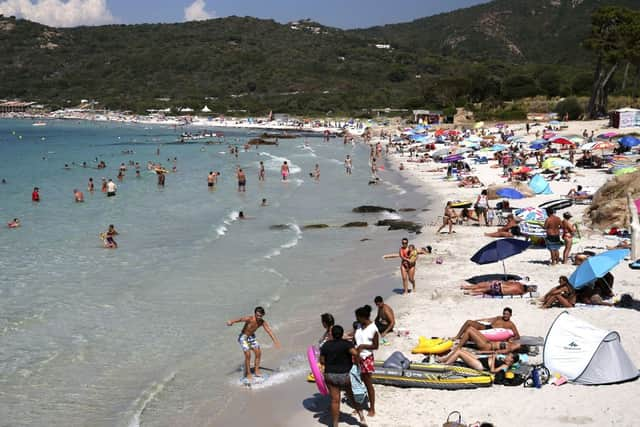New law forces Brits to give fingerprints to holiday in Europe, including Spain, France and Italy
and live on Freeview channel 276
British holidaymakers will be required to register their fingerprints and pictures with the EU under new laws, which includes Spain, France, Italy, Greece and Portugal.
The European Union is planning to introduce a new automated IT system for registering all travellers from the UK and other non-EU countries every time they cross an EU external border.
Advertisement
Hide AdAdvertisement
Hide AdUnder the EU Entry/Exit System (EES), holidaymakers will be required to scan their passports and other travel documents at a self-service kiosk before crossing the border. The system will register your name, type of travel document, your fingerprints and pictures of your face, as well as the date and place of entry and exit.


EES data will be used to ensure compliance with the rules of the Schengen area on entry and the permitted lengths of stays. The system will record anyone who overstays and any refusals of entry.
The EES is due to be introduced by the end of this year, although a confirmed date has not yet been announced. It was originally scheduled for 2022 and was later pushed back to May 2023, but has been delayed twice.
The UK government says it is likely that non-EU/Schengen citizens who do not require a visa to enter the EU will have their fingerprints and facial images taken the first time they cross a border into the EU, once the new system comes into force. This data will normally be erased from the system for data protection reasons three years after your last trip to the EU. Anyone who needs a visa to enter the EU will not be required to give fingerprints as this will already have been done as part of the visa application.
Advertisement
Hide AdAdvertisement
Hide AdThe system will apply when entering 25 EU countries - including all member states except Cyprus and Ireland - and four non-EU countries that are part of the border-free Schengen area. This includes Norway, Iceland, Switzerland and Lichtenstein.
Currently, the UK and Ireland have a common travel area in place meaning the EES system will not be put in place for travel between the two countries. The full list of 29 countries that will use the EES system when it is introduced are:
- Austria
- Belgium
- Bulgaria
- Croatia
- Czechia
- Denmark
- Estonia
- Finland
- France
- Germany
- Greece
- Hungary
- Iceland
- Italy
- Latvia
- Liechtenstein
- Lithuania
- Luxembourg
- Malta
- Netherlands
- Norway
- Poland
- Portugal
- Romania
- Slovakia
- Slovenia
- Spain
- Sweden
- Switzerland
The system will also be put in place at the Port of Dover and Eurostar and Eurotunnel terminals in the UK as the UK government has reciprocal agreements with France that the French authorities can operate border checks at these UK departure points into the EU.
The government said it is working with port operators and the French authorities to try to minimise delays and traffic build-up at the border when the EES takes effect. The European Commission said it is looking at introducing the system in a gradual and flexible way to help avoid long waiting times at border crossings.
Advertisement
Hide AdAdvertisement
Hide AdThe EU, and countries due to operate the EES, are still working on implementation plans for the system, so some details on how it will operate are still unclear clear, and it is possible there could be further delays.
Comment Guidelines
National World encourages reader discussion on our stories. User feedback, insights and back-and-forth exchanges add a rich layer of context to reporting. Please review our Community Guidelines before commenting.
